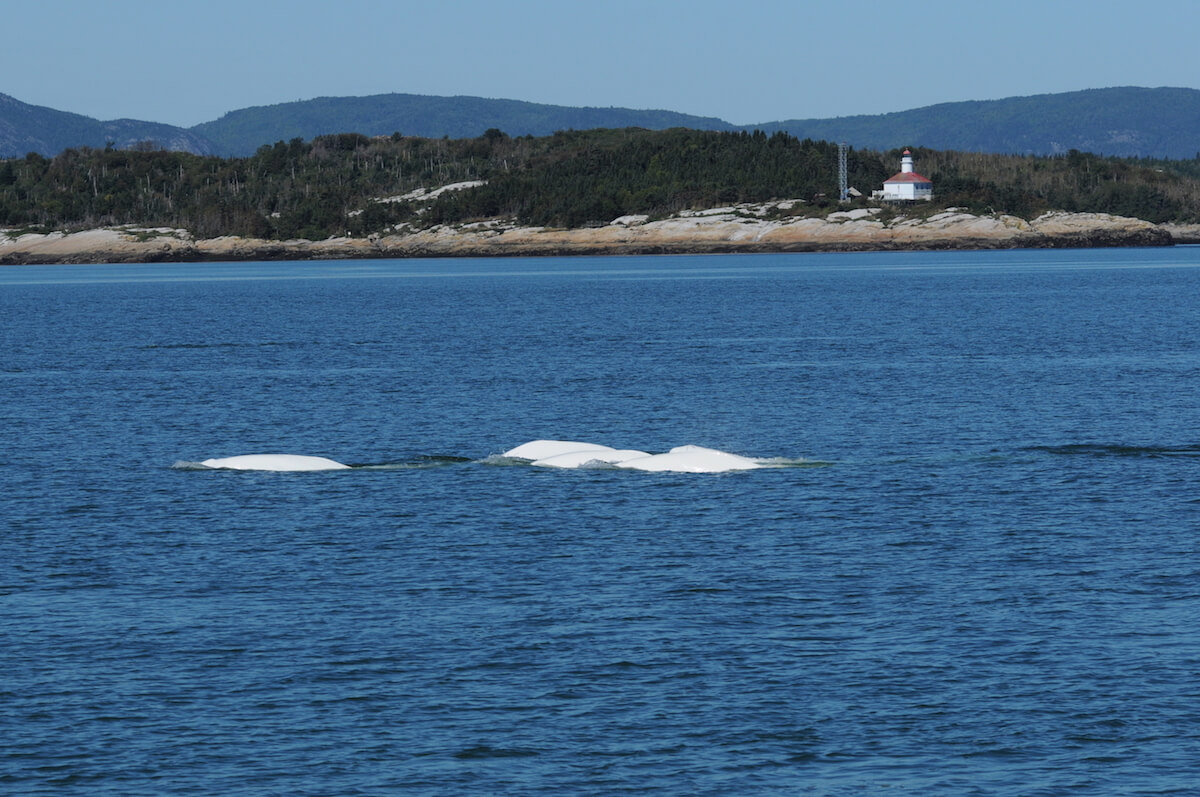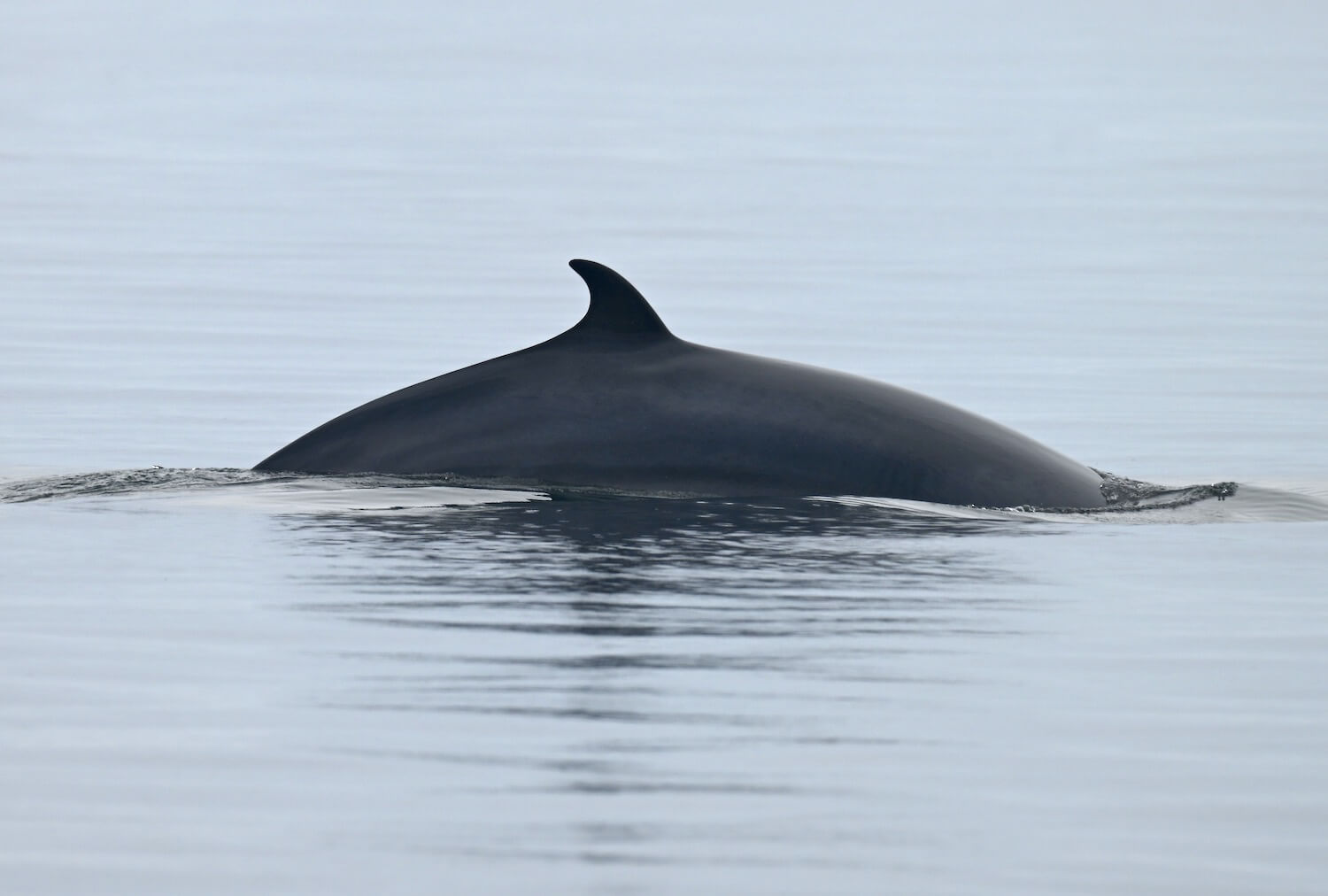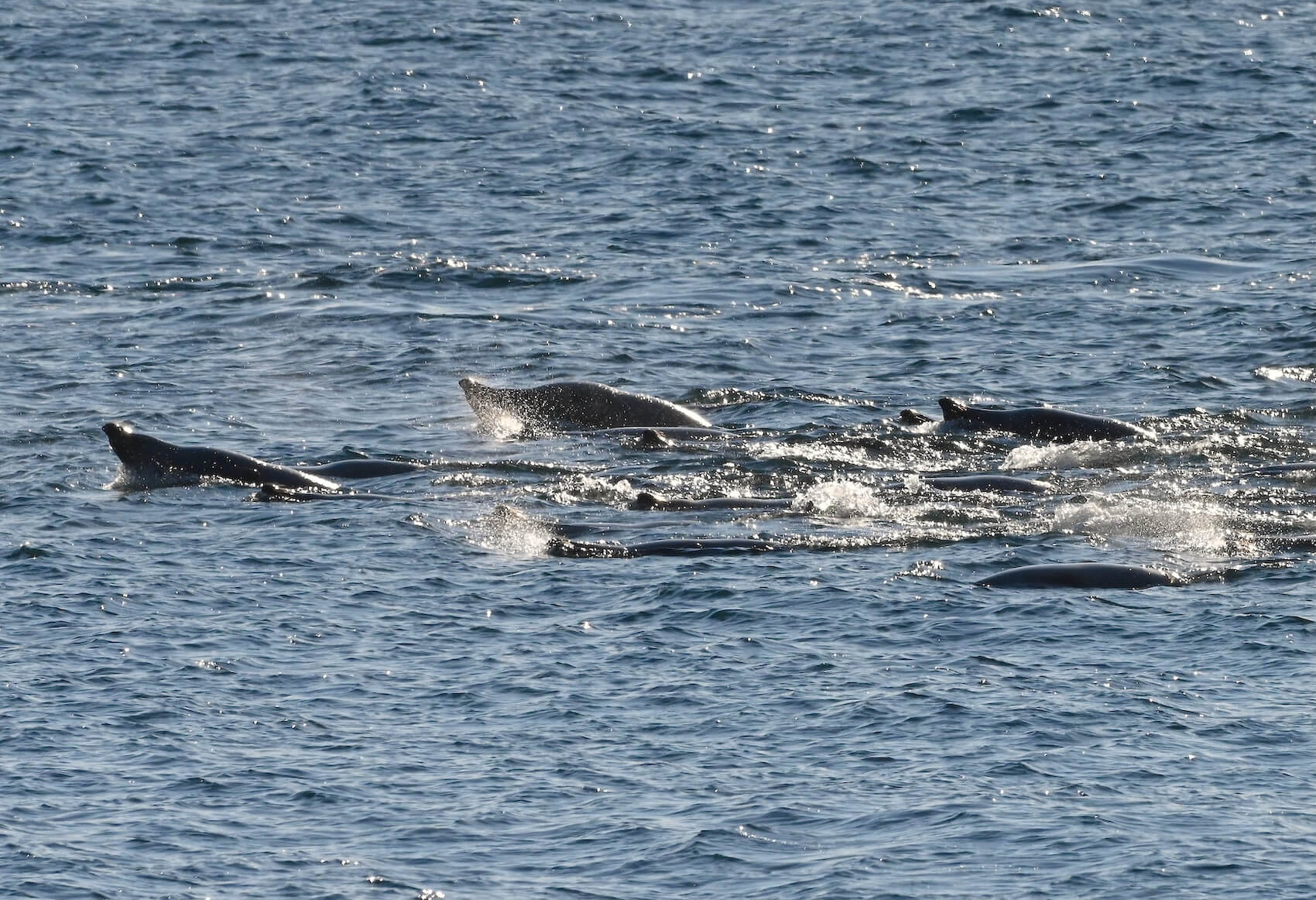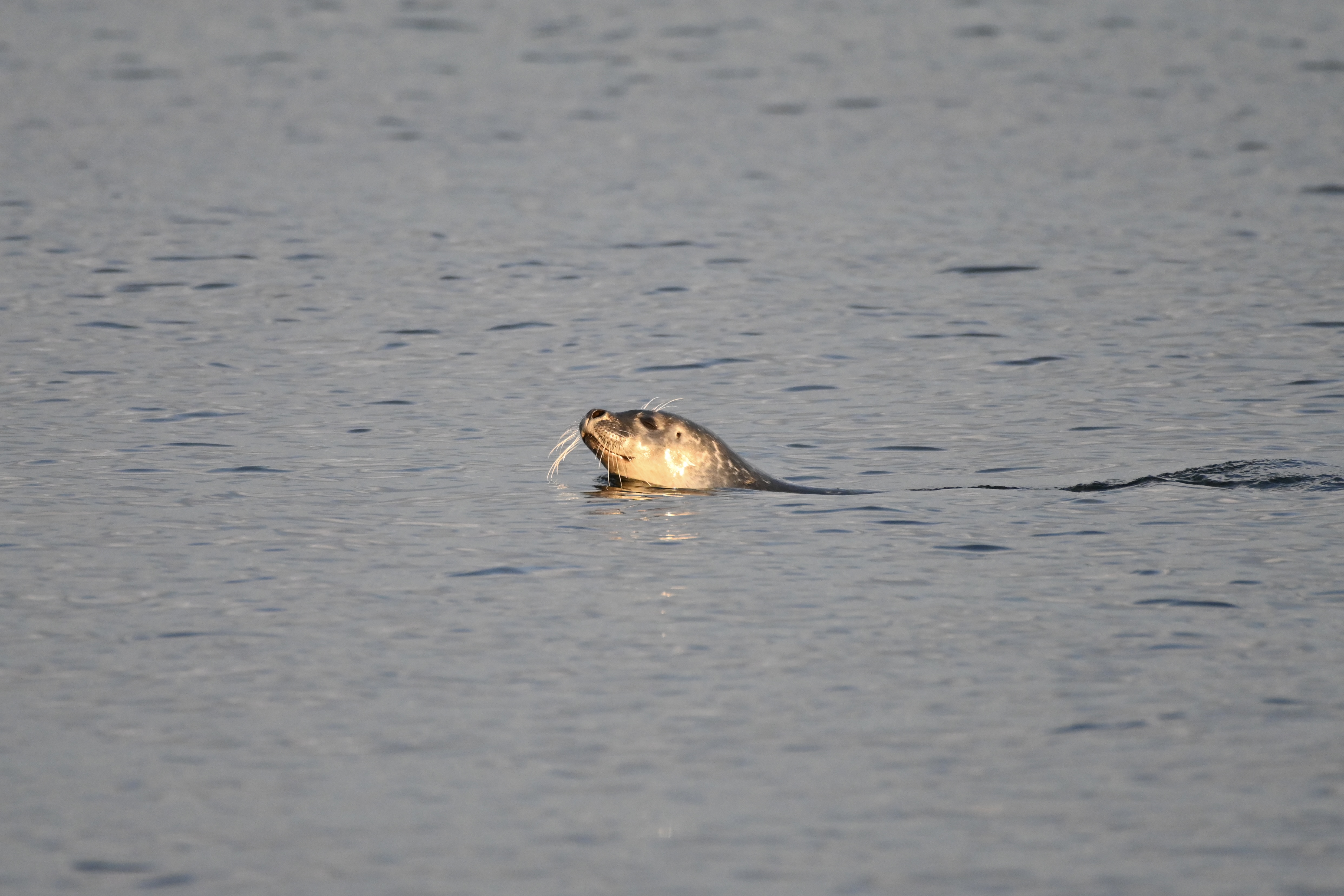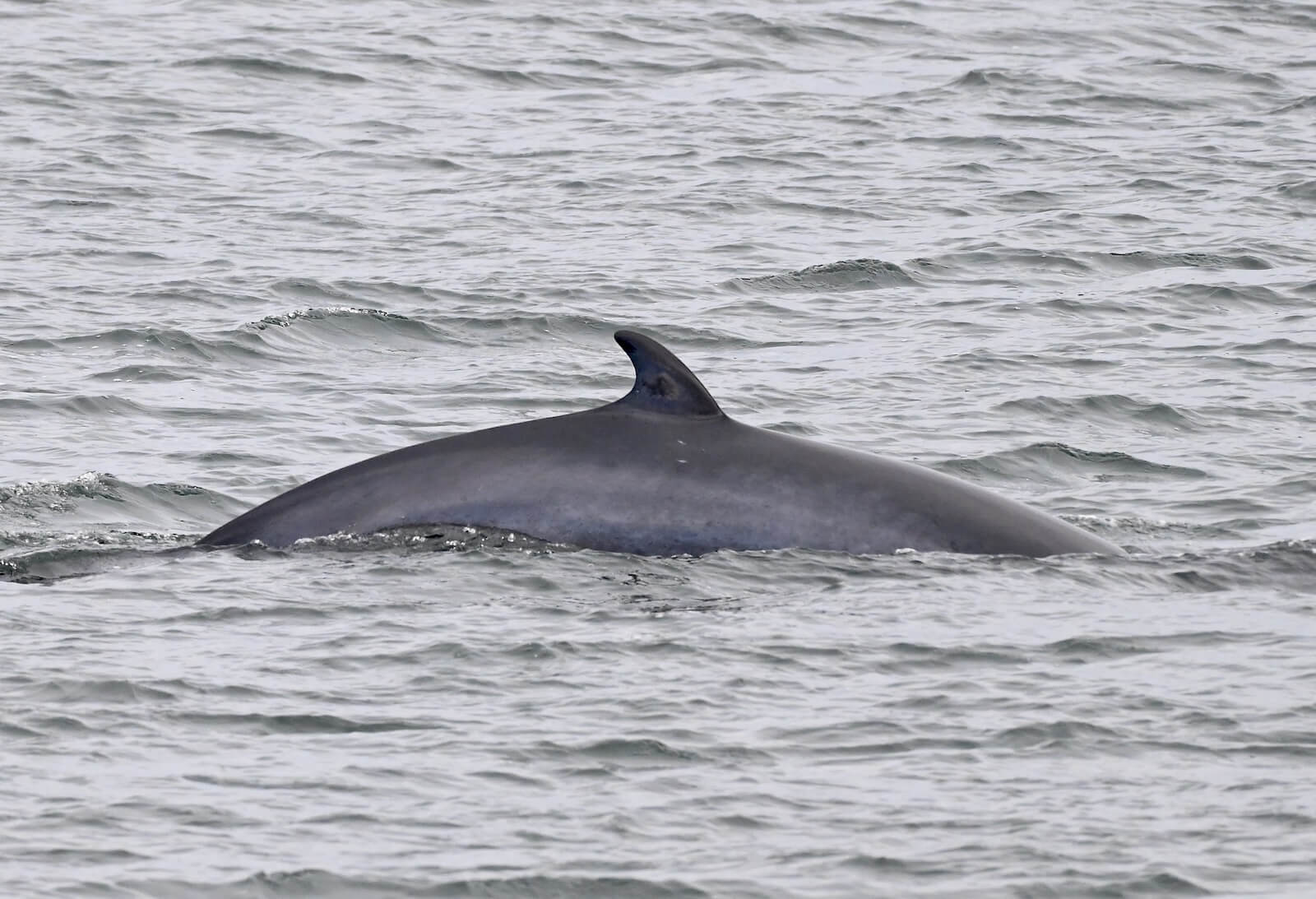It’s been a veritable parade of new whales this week: belugas dispersing in the estuary (even providing a memorable scene for a woman from Les Escoumins on Saint-Jean-Baptiste Day), minke whales up and down the St. Lawrence, and fin whales near Sept-Îles. Plus, there are now six humpback whales swimming in Gaspé Bay.
Celebrating belugas
“Yesterday, June 24, in the late afternoon, there was a large group of about ten belugas off Pointe-à-la-Croix in Les Escoumins,” describes a local enthusiast with patriotic fervour. “With the blue water and the white belugas – not to mention that belugas are one of Quebec’s most emblematic cetaceans – it was a fitting sighting for this National Holiday!”
Across the St. Lawrence, belugas were spotted in Rivière-du-Loup, Cacouna, as well as Pointe-Noire by a resident who mentions “lots of belugas and a couple of minke whales” in the area. Near Cap-Chat, a group of seven individuals was roaming. Well adapted to icy waters, the beluga is the only cetacean species to reside in the St. Lawrence year-round. Having left its mark on our popular culture, the population is now endangered and is estimated to number around 1,850 individuals.
Rough weather with waves and a few days of fog didn’t prevent one naturalist from observing a few marine mammals. “I enjoyed my first sighting of the season: a female beluga with her calf between Île aux Lièvres and Saint-Siméon. I also spotted two harbour porpoises in the chop at the western tip of Île aux Lièvres.” In Baie Sainte-Marguerite, a research assistant explains that white whales are swimming in the bay. Every summer, this area is closed to watercraft to minimize disturbance to belugas. According to Parks Canada monitoring data, adults accompanied by young account for over 90% of the individuals frequenting this specific sector of the Saguenay Fjord.
Memorable sightings
A visitor passing through Bic National Park reports: “In the fog, a mother harbour seal nursing her pup. A moment frozen in time.” In harbour seals, nursing lasts between 4 and 6 weeks. Their milk is rich in fat (50% or more), which allows pups to triple their weight during this period.
At the opposite end of the St. Lawrence, other species provide excitement for one whale lover: “Two or three minke whales and as many porpoises were present in the area between Baie-Comeau and Franquelin.” Even if they are few in number, it’s still hard to be certain exactly how many there are! There was also a young grey seal and a harbour seal.”
Big whales in the gulf!
To see fin whales or humpbacks, you have to head east. In Gaspé Bay, there have been six humpback whales, as well as two fin whales, a few minke whales, seals resting on the beaches, and a basking shark on the prowl. Near Sept-Îles, the Sept-Îles Education and Research Centre tallied “ten fin whales including a group of four, three humpbacks, and a basking shark.” The waters are likely teeming with krill, small fish, and other food! A gulper, the fin whale is believed to use the asymmetrical colour pattern on its head (its right side is lighter) to scare and corral its prey. Humpback whales, on the other hand, are believed to make use of their pectoral fins in their feeding strategies.
Where are the whales this week? Observation map
These data were reported by our network of observers. The observations give a rough idea of the presence of whales, but do not in any way represent the true distribution of cetaceans in the St. Lawrence. Enjoy!
Click on the whale or seal icons to see the species, number of individuals observed, additional information or photos of the sighting. To zoom in on the map, click on the icon in the upper right corner. The map works well on Chrome and Firefox, but less so on Safari.
To display the list of observations, click on the icon in the upper left corner.
Thanks to all our collaborators!
Special thanks go out to all our observers who share their love for marine mammals with us! Your encounters with cetaceans and pinnipeds are always a pleasure to read and discover.
On the water or from shore, it is your eyes that give life to this column.
Odélie Brouillette
Marie-Andrée Charlebois
Krystal Chandler
Guylaine Côté
Thalia Cohen-Bacry
Laeticia Desbordes
Hélène Guitton
Sarah Flibotte
Jade-Audrey Lavergne
Pascal Pitre
Renaud Pintiaux
Diane Ostiguy
René Roy
Andréanne Sylvain
Guy Synnott
Laurence Tremblay
J. Varin
Marielle Vanasse
Gabriela Vincent-Parada
And all those we left out!
Additionally, we would like to acknowledge the following teams that also share their sightings:
Sept-Îles Research and Education Centre (CERSI)
Group for Research and Education on Marine Mammals (GREMM)
Marine Mammal Observation Network (MMON)
Quebec Marine Mammal Emergency Response Network (QMMERN)
Mingan Island Cetacean Study (MICS)
Would you also like to share your observations?
Have you seen any marine mammals in the St. Lawrence? Whether it’s a spout offshore or just a couple of seals, drop us a line and send your photos to [email protected]!


